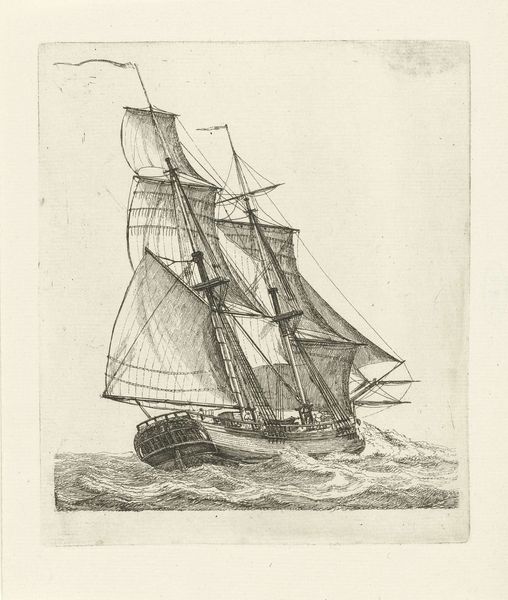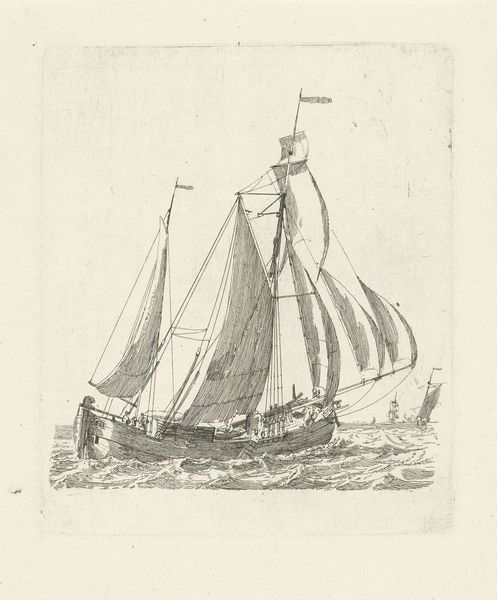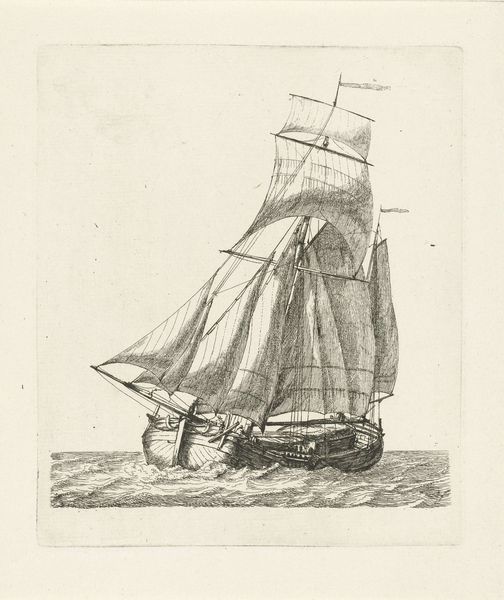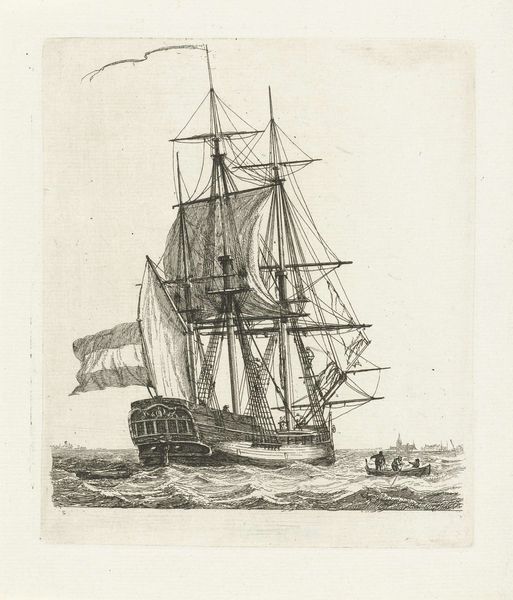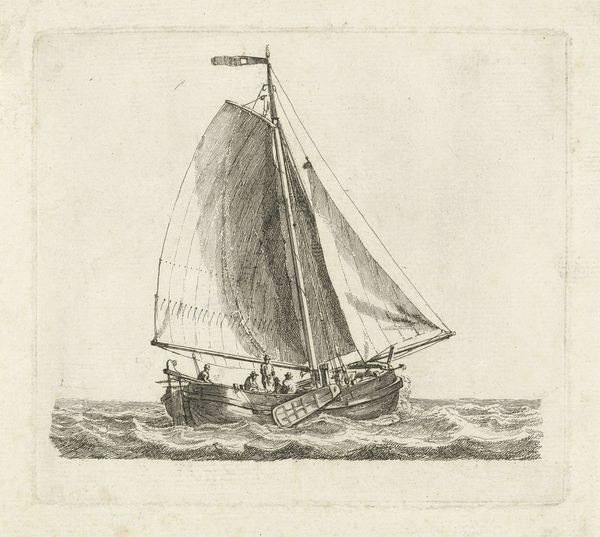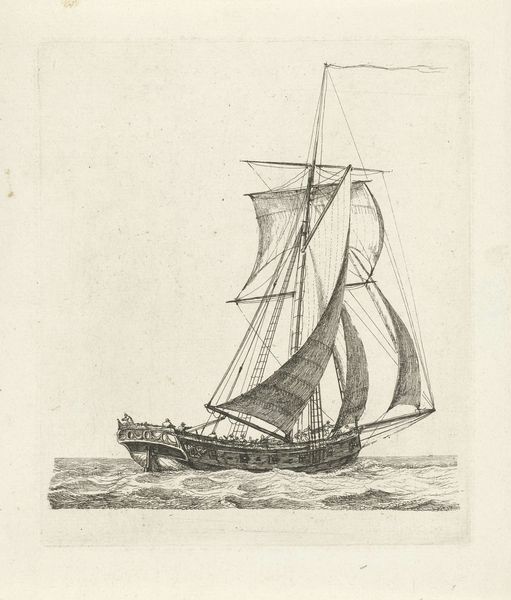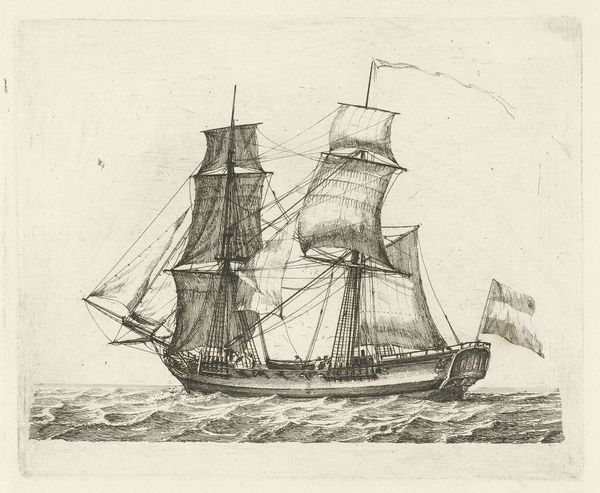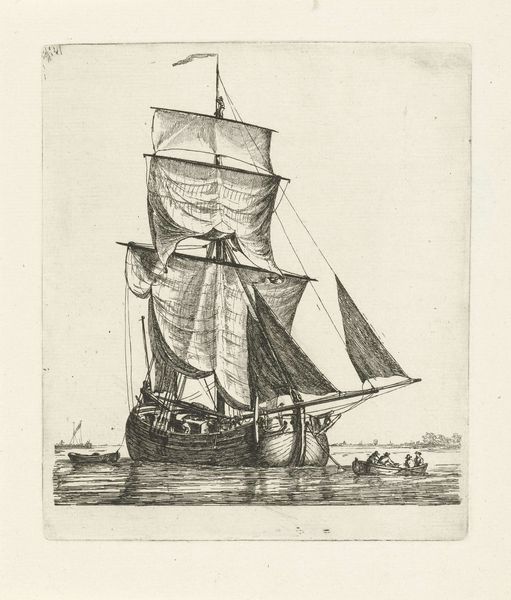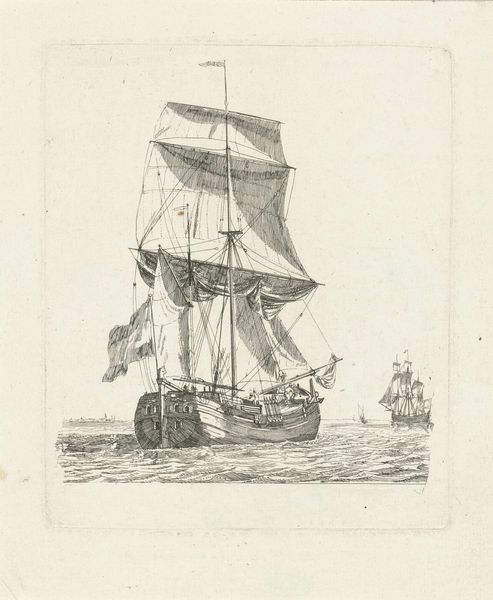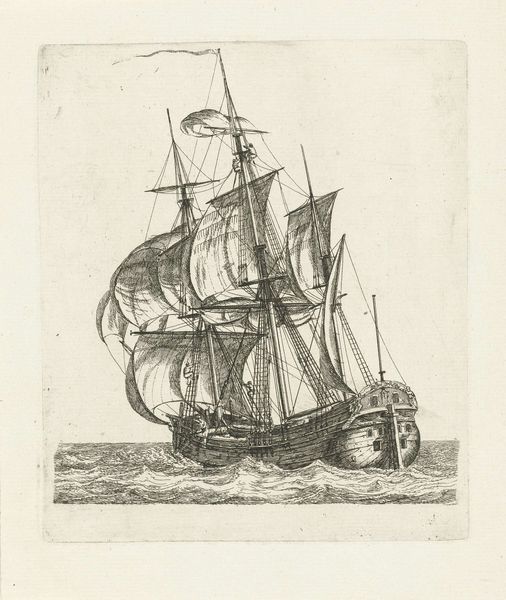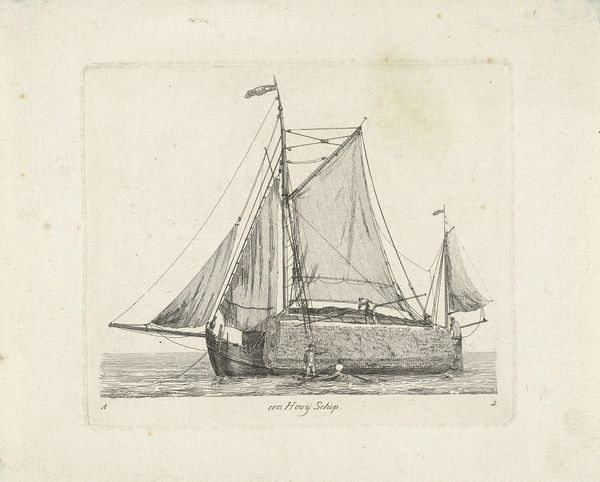
print, etching
#
quirky sketch
#
mechanical pen drawing
# print
#
pen sketch
#
etching
#
landscape
#
personal sketchbook
#
idea generation sketch
#
sketchwork
#
pen-ink sketch
#
line
#
sketchbook drawing
#
genre-painting
#
storyboard and sketchbook work
#
realism
#
initial sketch
Dimensions: height 150 mm, width 129 mm
Copyright: Rijks Museum: Open Domain
Curator: Here at the Rijksmuseum, we have "A Sailing Ship with a Sloop on the Waves," an etching by Gerrit Groenewegen from around 1790. It’s quite detailed for such a small print, isn’t it? Editor: It’s all lines and light, isn’t it? Immediately, I feel the chill of the water spraying, even in monochrome. It’s got that fantastic slightly feverish dream quality; like a half-remembered journey, or an old mariner's tale told in a pub, smelling of brine. Curator: Groenewegen specialized in marine subjects. Remember, the Dutch Republic’s Golden Age was built on maritime trade. Art like this served not just as documentation but also as a point of national pride, reinforcing Dutch mastery of the seas and celebrating global commerce. Prints made art accessible. Editor: Right. And it also reminds us that Dutch prosperity relied heavily on exploiting international waterways; an idea easily overlooked in idyllic sketches, of which this sort of reminds me. Still, though the image feels calm, the vessel looks loaded down with people – the scene implies constant labour to make a journey possible at all, an often unspoken aspect of wealth. Curator: Exactly! Prints had an inherently public quality; circulated widely and consumed across social strata. Studying their subject matter gives a glimpse into the concerns and cultural values of the 18th century. They allow us to see what stories and images resonated. Editor: It makes me consider what parts of this print, and other works from the era, were designed to be readily “seen,” versus what details might be present for the sake of accuracy that the patron might not notice, but that we may dwell on now. Curator: That’s a really intriguing perspective! Prints also served practical functions: instruction manuals for navigation, records of voyages and far-off lands… disseminating knowledge across social divides. Editor: Well, considering the rough, slightly agitated quality, that feels totally true: this print doesn’t shy away from the turbulence inherent in trade; the seas were seldom serene. The artist acknowledges that. Curator: Indeed, so when considering images of ships, think about their purpose. Beyond art objects, many served crucial functions in their own era. Editor: Right, and beyond commerce: prints like these are maps of thinking; showing us how the present saw itself. Thank you.
Comments
No comments
Be the first to comment and join the conversation on the ultimate creative platform.
